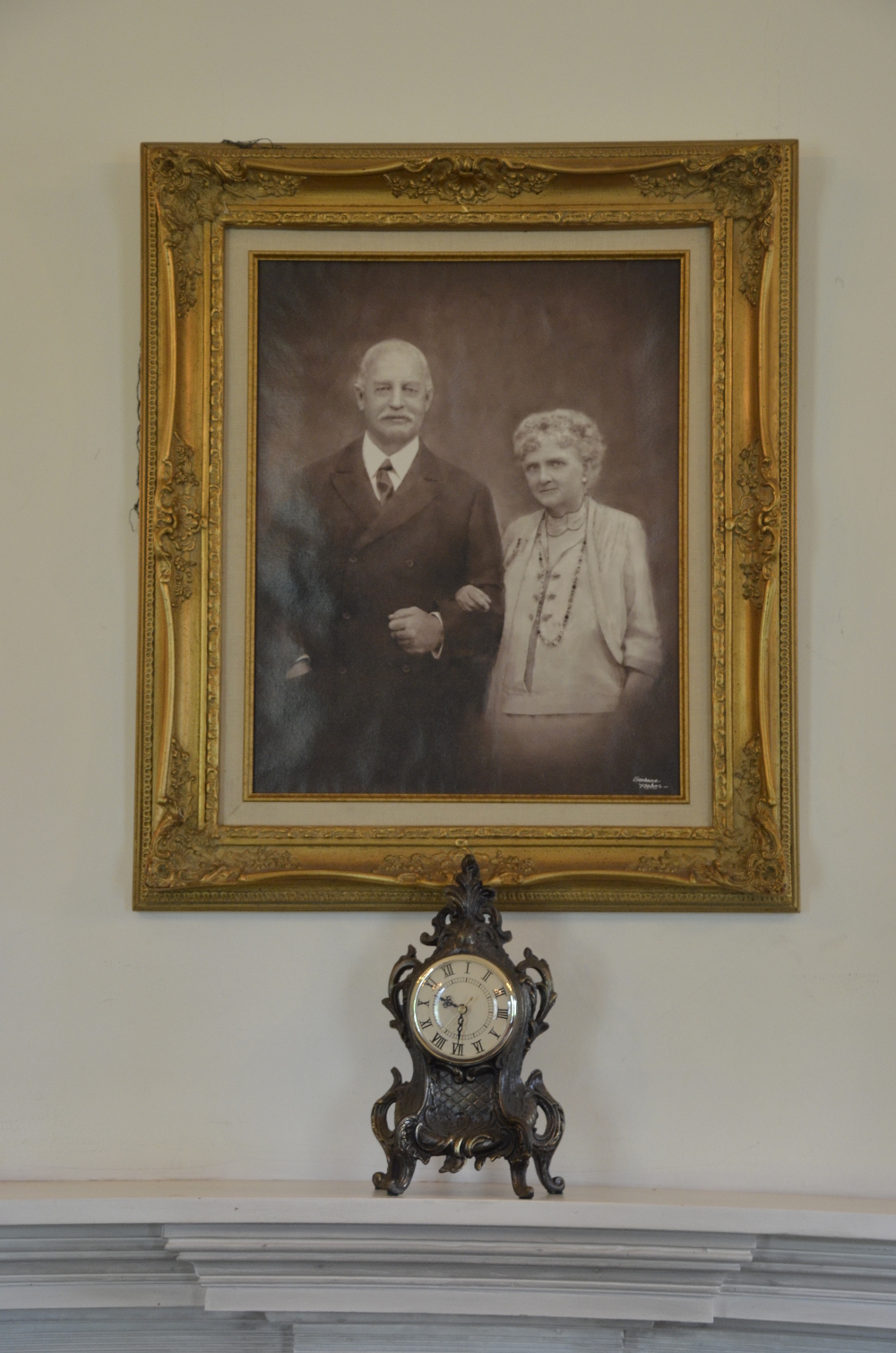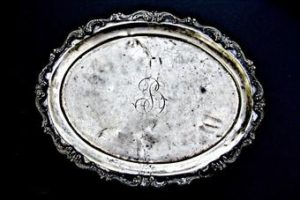The historic home of Phineas and Phoebe Pemberton and the Anthony Morris Families. Mrs. Morris, Molly/Mary, great-granddaughter of the Pembertons, sadly never lived there, as she died in her 30’s. He was so depressed that his first cousin, prominent Phila. Doctor, Caspar Wistar (of Wistar Road fame?) suggested he needed a change of scenery, the usual prescription in 1812, before discovery of germ theory, penicillin, etc. This is what led Morris to write to his old friend, Pres. James Madison, requesting he choose him for the post in Spain.
To make sure he got it, he also wrote to First Lady Dolley Madison, knowing she had her husband’s ear, if not more. Morris knew Dolley from the days that they were both teenagers living in Phila. It is quite possible they had a flirtation there, because he remained in touch with Dolley all through his residency in Spain, via letters to his oldest daughter who was loved by Dolley, whose only child, a son, was a reprobate.
The author of the book I have referenced, H. L. Dufour Woolfley, “A Quaker Goes to Spain: The Diplomatic Mission of Anthony Morris, 1813-1816”, visited Bolton, photographed it, and interviewed Jim Snow and Sam Snipes and wrote a sincere autograph to the Friends of Bolton inside. He also mentioned Jim and Sam in the text. Jim was beaming with pride, when he brought it to the next meeting, as well he should have been.

Phineas Pemberton

Phineas Pemberton was William Penn’s chief administrator in Bucks County and Falls Township’s most prominent citizen. He and his father-in-law, James Harrison and his own father Ralph Pemberton and families arrived from Bolton, Lancashire, England in 1682 on the ship “SUBMISSION .” They settled on 300 acres opposite Bordentown, NJ, on the bend of the Delaware River just below Biles Island and the 13 farms shown on the 1690 map, and just outside the tract of Pennsbury that Penn reserved for himself. He and James Harrison named it, “Grove Place.” It is shown as owned by John Thompson in 1858-1891 and was known as the Thropp farm prior to the purchase by W. Paul Starkey, Sr. as his residence in the 1940’s.
Beside holding the office of Clerk of all Courts, Pemberton was the Register of Wills, Receiver of the Proprietary Quit Rents and Master of the Rolls. He kept the records of the arrivals of settlers coming into Bucks County, marriages, births and deaths. He also kept a registry of the “Ear Marks” for the owners of cattle and swine, as required by law. (There were no fences in those days). He was also Surveyor General, in charge of laying out roads.
He served three terms in the Provincial Council, four terms in the General Assembly and was President of the Assembly. Pemberton was one of the prominent persons who felt that a new Frame of Government should be drawn up to supersede the original charter prepared by Penn in 1683. From his official position, Pemberton was an “insider” who bought land advantageously as it came on the market and amassed considerable wealth.
His wife Phoebe and parents, the Harrisons and several children all died in the 1690’s from an unknown fever which was attributed to the fog that often hangs over Penns Manor, near the River. His father-in-law, James Harrison, was in charge of the building of the manor house at Pennsbury, beginning in 1683. Pemberton then relocated on higher ground in Bristol Township and named his home “Bolton” after his boyhood home in England. The east wing of the “Bolton Mansion” in the Holly Hill section of Levittown is thought to be Pemberton’s original residence.
Pemberton was the presiding officer of the annual gathering of Quakers, known as Philadelphia Yearly Meeting of Friends. He was thus, a leader in government, religion and business. William Penn wrote numerous letters to Pemberton and held him in great affection. Writing to James Logan on 9-8-1701, the Proprietor said “Poor Phineas Pemberton is a dying man, and was not at the election, though he crept (as I may Say) to Friends meeting yesterday. I am grieved at it: for he has not his fellow, and without him this is a poor country indeed.” Samuel Carpenter wrote to Penn:
“Phineas Pemberton died the 1st mo last and will be greatly missed, having left few or none in these parts or adjacent like him for wisdom, integrity and general service, a matter of sorrow when I call to mind and consider that the best of our men are take away, and how many are gone and how few to supply their places.” In a letter from the Proprietor to James Logan, dated at London, 21st, 4 mo., 1702, he wrote “I mourn for poor Phin. Pemberton the ablest as well as one of ye best men in the Province.”
Israel Pemberton
Pemberton’s son, Israel, born 1684 at “Grove Place.” was educated by his parents and by Francis Daniel Pastorius in Philadelphia. Israel went to Philadelphia, entered the counting house of Samuel Carpenter, one of the ablest and most affluent Friends of that day, and became one of the leading merchants. Like his father he was also president of the Legislature and Presiding Officer of Philadelphia Yearly Meeting of Friends and was dubbed, “King of the Quakers”. He was Common Councilman, 1713; Alderman, 1720, for a life tenure; and was one of the city’s two members of the Provincial Council for 20 years, beginning 1718. He devoted much time to making peace with the Indians in the Lancaster and Harrisburg areas from the invasions into their territory by new immigrants as well as retaining his father’s Buck’s County properties.
His city residence was at southwest corner of Front and Market Streets from 1718 to 1745, when he moved to the southwest corner of Third and Chestnut Streets, called Clarke Hall. It was the resort of many strangers of note from Europe and famous for its beautiful terraces of gardens with the prospect of the river which they commanded. Israel Jr.’s residence on Chestnut Street, between Independence Hall and Carpenters Hall was an example of one of the grandest town houses of the mid 1700s. Israel also owned a place called, “Evergreen,” in 1738 at 23rd and South and Gray’s Ferry Road. he married Rachel, daughter of Charles Read and sister-in-law of James Logan, in 1710.
Israel’s sons, Israel, Jr., James and John carried on in Phineas’ and Israel’s footsteps and played prominent roles in Philadelphia. Israel Jr., and James were among the merchants who were negotiating with the liberal members of Parliament associated with Edmund Burke. Edmund Burke trying to preserve peace and head off the American Revolution in 1770-1775 era.
James Pemberton Morris
Upon the death of Israel Pemberton, Bolton Farm was bequeathed to his son, James, born 1723. He was a widely traveled man at home and abroad, successful in mercantile pursuits as his father had been, and interested in the welfare of the indians and negroes as befitted a concerned Friend. He was President of the Abolition Society founded by Benjamin Franklin, a Founder and manager of the Pennsylvania Hospital, and a member of the Assembly, resigning with all the Quaker members in 1756 when Governor Morris declared war on the Delaware Indians. Opposing war with England, he was exiled with many other prominent Quakers to Virginia in 1777, during which time his wife, Phoebe, ably managed his extensive affairs. James’ daughter Mary married Anthony Morris.
Phineas Pemberton and all his immediate family were buried in a family graveyard shown on the 1891 map of the J. W. Thompson Estate at Grove Place. When US Steel purchased the Starkey farm, they obtained court and Pennsylvania approval to relocate this graveyard in Pennsbury Manor, 200 yards south of the Manor House. There one can find the plaque erected by Henry Pemberton, a decendent, in 1905 commemorating his illustrious forefathers and Falls Township’s most prestigious family for 120 years.
From Pennsbury Manor cemetary... within these walls are buried
AGNES – Wife of Immanuel Harrison
Born 1601 – Died August 6, 1687
Her Son – JAMES HARRISON
Born 1628 – Died October 6, 1687
His wife – ANNE (HEATH) HARRISON
Born February 13, 1623 – 24 – Died March 5, 1689 – 90*
Their child – PHOEBE
Wife of Phineas Pemberton
Born April 7, 1660 – Died October 30, 1696
RALPH PEMBERTON
Born January 3, 1610 – 11 – Died July 17, 1697
His son – PHINEAS PEMBERTON
Born January 30, 1649 – 50 – Died March 1, 1701- 02*
Five of his children
JOSEPH
Born May 11, 1682 – Died November 1702
SAMUEL
Born February 3, 1686 – 87 – Died January 23, 1691 – 92*
PHOEBE
Born February 26, 1689 – 90 Died May 30, 1698
RALPH
Born July 15, 1694 – Died November 18, 1694
PHINEAS JENNINGS
Born April 17, 1696 – Died 1701
There also rest Their Friends
ROGER LONGWORTH
Born 1631 – Died August 7, 1687
LYDIA WHARMBY
Born 1640 – September 3, 1695
Erected by Henry Pemberton – 1905
*The Gregorian calendar now in general use was introduced by Pope Gregory XIII in 1582. It corrected the error in measuring time, that had occurred since Julius Caesar introduced the Julian calendar in 46 B. C. Great Britain did not adopt the Gregorian calendar until 1752. There was a difference of 10 days between the calendars at that time. Seventeenth-century Englishmen started the new year officially of March 25, but January 1 also was used as New Years’ Day. Some writers double dated for the period of January 1 to March 24. Hence the double years for Pemberton and for his family gravestone dates.
